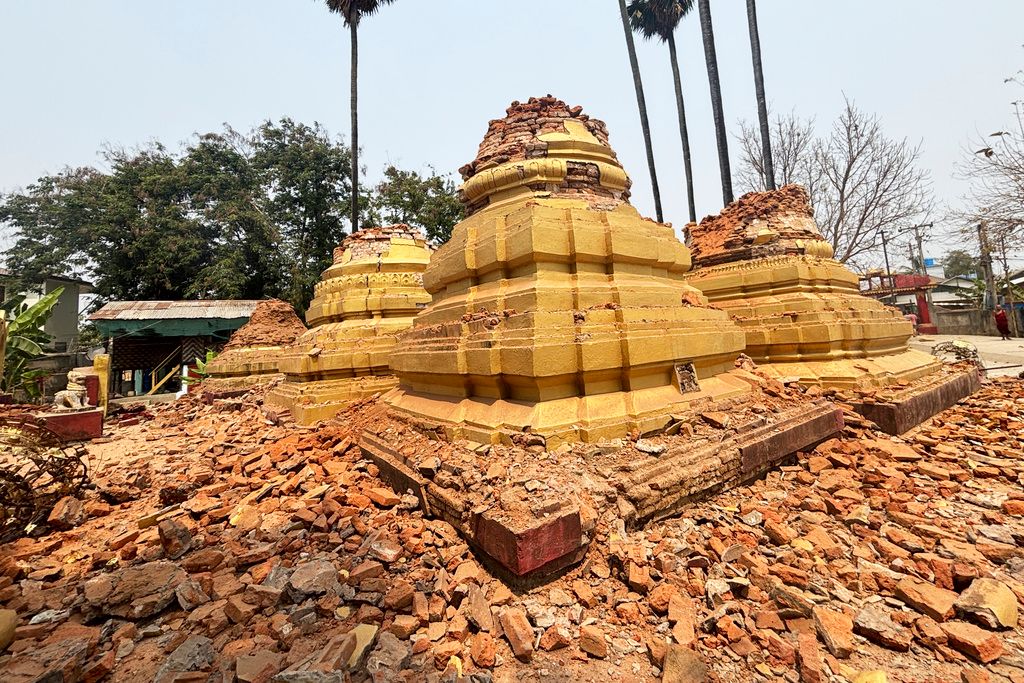Philippines faces constant risk of earthquakes above magnitude 7, says Phivolcs chief

Philippine Institute of Volcanology and Seismology (Phivolcs) Director Teresito Bacolcol said the country remains highly vulnerable to powerful earthquakes, including tremors stronger than the ones that struck during the 1990 Luzon and 1976 Moro Gulf disasters.
In a televised briefing on Monday, March 31, Bacolcol explained that the country’s location along multiple active faults—involving over 180 active segments and six major trenches—increases the likelihood of future seismic events.
“Except for Palawan, almost every part of the Philippines is affected by active faults. We have six major trenches, all capable of generating large-magnitude earthquakes and even tsunamis,” Bacolcol warned.
He pointed out that significant faults and trenches, including the East Luzon Trough Philippine Trench, Cotabato Trench, Sulu Trench, Negros Trench, and Manila Trench, could trigger earthquakes stronger than the 7.8-magnitude 1990 Luzon Earthquake and 8.1-magnitude 1976 Moro Gulf Earthquake.
“The possibility that we will experience a magnitude 7.7 earthquake or above is always there,” Bacolcol said, referencing the 7.7-magnitude earthquake that struck Myanmar and Thailand on March 28.
Bacolcol also cited a 2004 study by Phivolcs, Metro Manila Development Authority (MMDA), and Japan International Cooperation Agency (JICA), which estimated that a magnitude 7.2 earthquake, referred to as the “Big One,” could result in up to 33,000 casualties in Metro Manila.
While Bacolcol acknowledged improvements in disaster preparedness, such as increased public awareness and the regular conduct of earthquake drills, he said full readiness for such a powerful earthquake remains a challenge.
“We cannot be 100 percent prepared. That is quite impossible. But we are more prepared now than before,” he said.
Despite the advancements, Bacolcol pointed out that older infrastructure, particularly in urban areas like Metro Manila, may not be built to withstand a major earthquake.
“Retrofitting and reinforcing these structures are important, which the government is now addressing,” he said.
Preparing for earthquakes, tsunamis
Bacolcol also shared essential tips for earthquake preparedness, especially for those living in high-rise buildings.
“For families, particularly those in high-rise buildings, it is important to have an evacuation plan,” Bacolcol advised in Filipino.
“Know the emergency exits and have emergency kits ready, containing food, water, medications, and a flashlight—enough to last for at least three days. It is also essential to practice ‘duck, cover, and hold’ drills with family members and establish a meeting point in case you become separated during an earthquake,” he added.
In addition to earthquake preparedness, Bacolcol reiterated the importance of being ready for tsunamis, particularly for those living along the coastline.
“We have real-time tide gauges and community tsunami alert stations for early warnings,” he said.
“However, we also teach people who live near the coast to be aware of natural signs of an impending tsunami, especially local tsunamis, which can strike within minutes after the main earthquake shock,” he added.
Bacolcol cited the 1976 Moro Gulf earthquake when the first tsunami wave arrived five minutes after the quake.
He explained that key natural indicators of an incoming tsunami include a strong earthquake that makes it difficult to stand, a sudden drop in sea level, or a loud rumbling sound from the ocean.
“If any of these signs are observed, evacuate to higher ground immediately,” Bacolcol said.